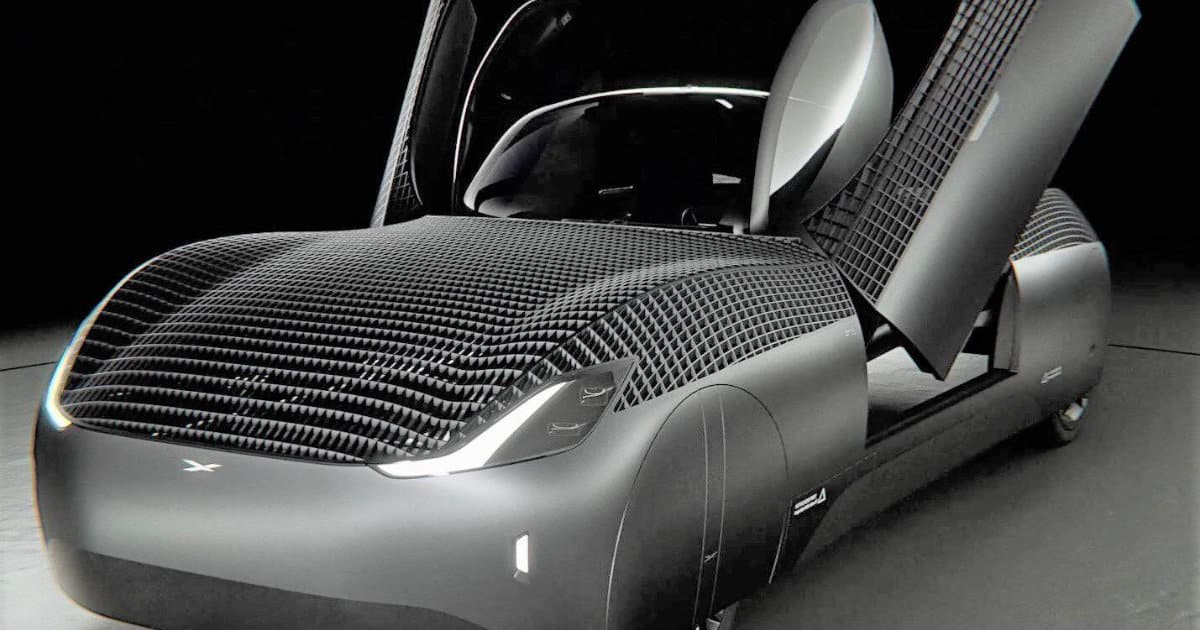The idea of flying cars once only existed in science fiction, but the California startup is making this a reality with its “Model A” Drive & Fly Vehicle. The Federal Aviation Administration (FAA) recently issued a Special Airworthiness Certification to Alef’s “Model A”, marking the first time a fully electric vehicle capable of both flight and ground travel has received such recognition from the U.S. government. This certification allows the vehicle to be used for exhibition, research, and development.
Alef Automotive claims that its “Model A” is the first fully electric vehicle that is both capable of vertical take-off and landing (VTOL) and suitable for driving on public roads. The vehicle, featuring four wheels and eight rotors integrated into its frame, can park in regular spaces, accommodating the structure of our current transport systems. This versatility sets the “Model A” apart from other eVTOLs that, while able to fly, cannot fit on regular roads or in conventional parking spaces.

This futuristic vehicle is envisaged to carry up to two occupants, offering a road range of 200 miles and a flight range of 110 miles. While promising, it must be noted that the vehicle is classified as a “low-speed vehicle,” which means its road speed won’t exceed 25 miles per hour. This restriction is due to pending approval from the National Highway Traffic Safety Administration. Alef assumes that for faster commuting, users would engage the Model A’s flight capabilities.
Alef Aeronautics revealed the “Model A” to the public in October 2022, which was met with excitement and intrigue due to its sleek, modern design. The vehicle’s exterior hides its rotors, with four in the front and four in the rear, enabling vertical takeoff and landing akin to a drone or helicopter, eliminating the need for a runway. During flight, the vehicle’s frame rotates sideways by 90 degrees, transforming the front and back of the car into wings, while the cabin auto-adjusts to face forward.

Jim Dukhovny, the CEO of Alef, expressed the company’s excitement about receiving this certification from the FAA, stating, “It allows us to move closer to bringing people an environmentally friendly and faster commute, saving individuals and companies hours each week. This is a one small step for planes, one giant step for cars.” Alef expects the first delivery of these vehicles by the end of 2025, with an estimated selling price of $300,000 each.
The development of the “Model A” dates back to 2015, when four friends were inspired by the vision of flying cars in the “Back to the Future” movies. Since then, Alef has made significant strides in this ambitious project, successfully conducting an automated test flight of a skeleton version of the car in 2018, followed by a full-size prototype the following year. With the FAA’s special airworthiness certificate, Alef can now continue the necessary research and development to refine their product.

As the eVTOL market evolves, the FAA continues to adapt regulations and develop policies for these innovative vehicles. New rules are being proposed that will require eVTOL operators to train and become certified pilots, ensuring safety in this new era of aviation. With the groundwork being laid, the FAA anticipates a surge in demand for pilot school classes as eVTOLs revolutionize travel.
The “Model A” represents the first steps towards an exciting future of commuting. As this mode of transportation takes off, the question now is whether Alef will equip its vehicles with Tesla’s North American Charging Standard (NACS) port. As we await the answer, the anticipation grows for the first deliveries in 2025.
Frequently Asked Questions About Flying Cars
Flying cars, also known as eVTOLs (electric vertical takeoff and landing vehicles), blend the functionalities of conventional cars and aircraft. They are designed to drive on roads and also take to the skies when necessary. The operational mechanism of these hybrid vehicles involves multiple rotors that facilitate vertical takeoff and landing, much like a drone or helicopter. Upon taking off, the vehicle’s frame rotates sideways for maximum speed in flight, while the passenger cabin remains facing forward.
According to Alef Aeronautics, a leading player in the flying car industry, they are aiming to commence production and deliveries of their FAA-certified Model A by the end of 2025. However, it’s important to note that the timeline may vary among different manufacturers due to technological advancements, regulations, and market readiness.
